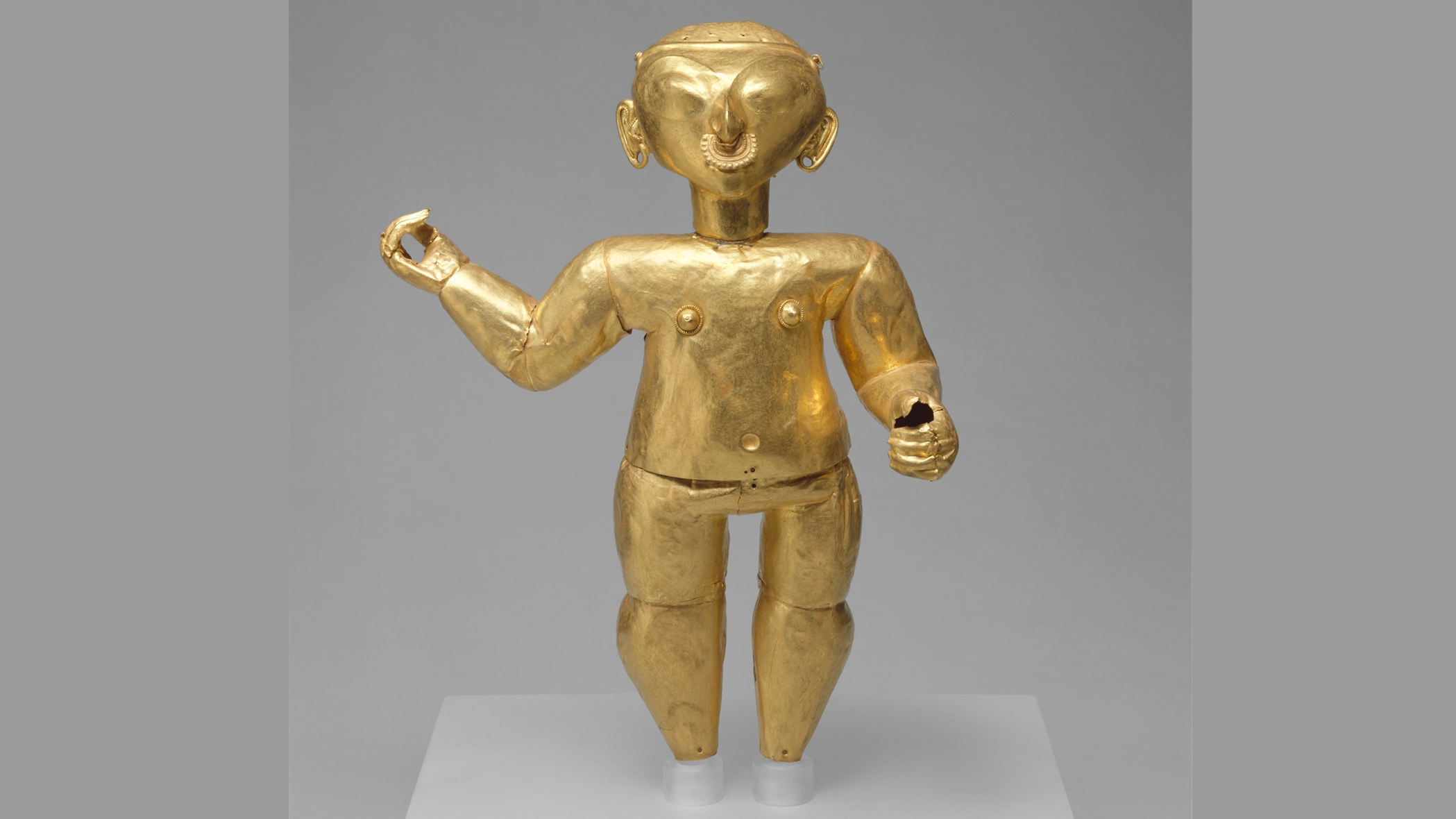
Name: Tumaco-Tolita standing figure
What it is: A gold sculpture of a person
Where it is from: Near the Colombia-Ecuador border
When it was made: A.D. 1 to 300
Related: Mechanical Dog: A ‘good boy’ from ancient Egypt that has a red tongue and ‘barks’
What it tells us about the past:
Two millennia ago, a group of people who were highly skilled in metallurgy flourished along the northern Pacific Coast of South America. Although they left no written records, the Tumaco-Tolita (also spelled Tumaco-La Tolita) people created this gold statue, a rare example of the art form in the ancient Americas.
The standing figure is missing its feet, which were once attached by gold wire, as well as the accessories and objects it once held in its hands. Only a “fancy nose ornament” remains on the figure, a clue that the figurine once donned a headdress on ritual occasions, according to the Metropolitan Museum of Art in New York City, where the statue is located.
The gold figurine, which is roughly 9 inches (22.9 centimeters) tall, was made between the first and fourth centuries near what is now the border of Colombia and Ecuador in the Cayapas River delta area.
Known in Colombia as the Tumaco culture and in Ecuador as the Tolita culture, the Tumaco-Tolita civilization arose in an area full of rivers, swamps, forests, and natural gold and platinum deposits. They created large plazas ringed by villages and constructed earthen mounds that were both residences and burial mounds for the elite, according to Met researcher Hugo Ikehara-Tsukayama. Between 200 B.C. and A.D. 400, the Tumaco-Tolita produced one of the most refined metalwork traditions in the Americas and traded with other communities in the area.
This gold figure may represent a woman, since it was more common to mark a sculpture with nipples for female statues than for male statues, Ikehara-Tsukayama said. However, skirts were also common in female images, so the lack of one on this sculpture means the figure’s gender is ambiguous.
MORE ASTONISHING ARTIFACTS
The flattened head likely reflects the cultural practice of cranial vault modification, which involves binding a baby’s head so that the skull grows in a different shape. This skull shape may have signaled that the person was high in social rank or importance.
Remains of human and animal sculptures in metal and clay have been found throughout Tumaco-Tolita settlements and in their graves, but the exact function of the sculptures is unknown.
By A.D. 500, the river island of La Tolita and its surrounding areas were abandoned, and the Tumaco-Tolita people appear to have dispersed, gradually depopulating the coastal region. But there is historical evidence that Tumaco-Tolita objects survived as heirlooms well into the 16th century, when conquistadors arrived in the area and wrote about clay and gold figurines as well as the delicate gold and platinum-plated jewelry they saw the Indigenous people wearing.
